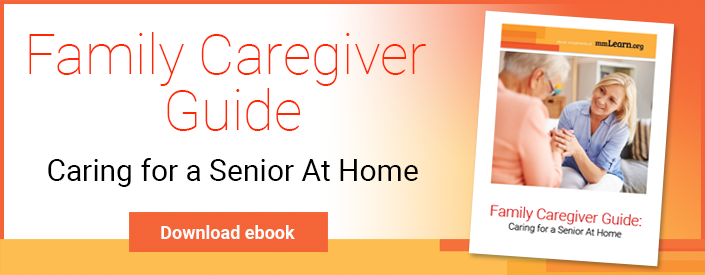 Osteoporosis is reaching epidemic proportions, with more than 200 million people worldwide suffering from this chronic metabolic bone disease.
Osteoporosis is reaching epidemic proportions, with more than 200 million people worldwide suffering from this chronic metabolic bone disease.
Osteoporosis is dangerous for older individuals because of the significant danger of fractures, which can cause lasting disability.
It’s important for older people and caregivers to understand the risks of osteoporosis, especially if they are committed to aging in place. Then they can work together to explore strategies for osteoporosis prevention.
What Is Osteoporosis?
The National Institutes of Health (NIH) defines osteoporosis as "a disease that thins and weakens the bones to the point that they become fragile and break easily."
Because bone is living tissue, it breaks down throughout our lives. When broken down bone tissue is not adequately regenerated and replaced, it can lead to weak bones and bone loss. Bone mass stops increasing around age 30.
Osteoporosis can be hard to detect because there are no clinical or outward symptoms. Most people are not aware that they have osteoporosis until they break a bone.
And when they do suffer a fracture, it can cause numerous other issues, and even lead to death.
A Growing Threat
According to the International Osteoporosis Foundation:
- Almost 54 million people in the US have low bone mass or osteoporosis.
- 10.2 million adults are estimated to have osteoporosis.
- More than 80% of osteoporosis cases occur in women.
- The cost of treating osteoporosis‑related injuries was $17 billion, back in 2005.
Unfortunately, the consequences can be dire for seniors suffering from osteoporosis: more than 1.5 million fractures happen annually due to this condition, and a full 70 percent of patients treated for osteoporosis‑related fractures do not regain their pre‑injury status. This can result in a vicious cycle of pain, disability, and loss of independence.
What do doctors recommend for osteoporosis prevention?
Osteoporosis Prevention
Bone loss is a natural part of the aging process, but osteoporosis doesn't have to be. Diet, exercise, and medication are all valuable management tools for reducing bone loss and preventing fractures.
A Calcium‑Rich Diet
It is important for seniors to supplement calcium for bone health. According to NIH recommendations, women over the age of 50 should take in 1,200 milligrams of calcium daily while men in the 51‑70 age groups should consume 1,000 daily milligrams of calcium. (After the age of 70, bone loss evens out for men and women so both should consume 1,200 milligrams a day.)
Certain foods are laden with calcium:
- dairy products
- soybeans and soy products like tofu and tempeh
- dark green leafy vegetables
- canned salmon
- figs, papaya, and oranges
- almonds
- calcium‑fortified foods, such as juices and cereals
- flour tortillas
- baked beans
Sounds like a picnic!
Vitamin D
Vitamin D is also essential for maintaining bone health because it helps the body absorb calcium. Sunlight is the best natural source of vitamin D, but many seniors do not get enough, especially during the winter months. It’s a good idea to ask a doctor if a vitamin D supplement is recommended.
Exercise to Strengthen Muscles
One key to both mental and physical health is exercise. Numerous studies show that lifestyle changes can help maintain bone health.
Daily walks, water exercise, or group fitness programs are all ways to boost fitness and strengthen muscles and bones. Weight‑bearing exercises are also an important part of strengthening muscles and bones.
Any amount of exercise helps. And for optimal bone health, the National Osteoporosis Foundation recommends
-
30 minutes of weight‑bearing exercises on most days of the week
-
2‑3 days of weekly muscle‑strengthening exercises
-
Daily balance, posture, and functional exercises. These can be done all at once or spread throughout the day.
This mmlearn physical therapy video gives tips on transitional movements and posture. It includes important safety and fall‑prevention tips.
In the following two videos, a physical therapist and a patient demonstrate balance training and core exercises.
To learn more about osteoporosis and bone health, including training for the lower extremities, upper extremities, balance, and transitional movement and posture, mmLearn offers free online video resources for caregivers.
Moving with Strength and Confidence
Our loved ones shouldn’t have to live in fear of a debilitating fall.
Caregivers, healthcare providers, and seniors can all work together to support osteoporosis prevention through lifestyle changes that include a balanced, calcium‑rich diet, sufficient vitamin D, and exercise.
The result will be stronger bones, and longer, healthier lives.

